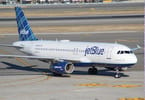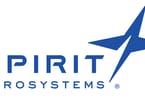GENEVA, Switzerland – From solar power installations at a hundred airports around the world, to tablet computers for pilots, brand new aircraft designs and flights on fuel made with waste gas from steel plants, a new report released at the Global Sustainable Aviation Summit today shows the aviation industry has embarked on a systematic programme of energy efficiency to reduce its climate impact.
The report, Aviation Climate Solutions, was released by the Air Transport Action Group, a global coalition of aviation partners promoting the sector’s sustainable development. Executive Director, Michael Gill, said at the launch: “The case studies show the wide variety of climate action across the sector. Carbon emissions reduction projects by over 400 organisations in 65 countries are represented. But this is only a snapshot of the projects underway. The most impressive realisation is the sheer amount of collaboration between industry partners, helping to drive efficiency. Action is taking place in all parts of the world: not only at large organisations, but also through partners in emerging economies.
“Importantly, the report also shows how the industry is working to meet the goals it has set itself through the climate action framework announced at the same Summit in 2008. Through investing in new technology, making the operation of aircraft more efficient and developing better infrastructure, the sector is more than meeting its goal of a 1.5% improvement in fuel efficiency per year. The case studies in the Aviation Climate Solutions report point to just some of the projects making that a reality.”
In 2008, the aviation sector became the first to set global goals to proactively manage its climate change impact. The industry will stabilise its net CO2 emissions from 2020 through a concept called carbon-neutral growth, whereby traffic would continue to rise to meet the demands of society and the economy, but growth in emissions would be offset through a global market-based measure. The longer-term goal is to actually reduce net CO2 emissions from aviation to half of what they were in 2005, by 2050.
Key areas of climate action in the sector include: the development of alternative fuels; operational efficiencies such as using lighter equipment on board and taking-off, flying and landing in smarter ways; the development of new technology, both entirely new aircraft and components; and systematic changes in airspace and navigation.
Michael Gill says the report shows that not all projects are headline-grabbers: “Some actions are big: such as bringing a new aircraft to service; and some are smaller, but significant in their own way. This is a reflection of the aviation industry as a whole. We serve thousands of communities and over three billion passengers a year, but each journey tells its own unique story. It is also a reflection of what will be needed to tackle the climate challenge on a broader level. All parts of the economy and all parts of society have a role to play, with both small actions and large shifts in thinking.”
From the report:
• More than 100 airports worldwide have invested in solar power, supplying a portion of their energy needs (and up to 100% in one case).
• The addition of wingtip devices to 8,300 in-service aircraft has saved around 56 million tonnes of CO2 in the last 15 years.
• Over 2,000 commercial flights have already taken place using sustainable alternative aviation fuels which are now being brought into everyday use, including billions of dollars invested by airlines pre-purchasing alternative fuel to help kick-start the industry.
• Lightweighting, including the use of new slimline seats, carbon-fibre food service trolleys and stronger but lighter cargo and baggage containers is saving millions of tonnes of CO2 each year across the fleet.
• New technologies such as ‘performance-based navigation’ are having an impact on air navigation in remote parts of the world, helping the industry serve communities more reliably and with lower emissions in challenging environments.
• A number of organisations are empowering their teams to generate climate action ideas – employees can provide expert insight into the initiatives that will help cut emissions.
WHAT TO TAKE AWAY FROM THIS ARTICLE:
- From solar power installations at a hundred airports around the world, to tablet computers for pilots, brand new aircraft designs and flights on fuel made with waste gas from steel plants, a new report released at the Global Sustainable Aviation Summit today shows the aviation industry has embarked on a systematic programme of energy efficiency to reduce its climate impact.
- The industry will stabilise its net CO2 emissions from 2020 through a concept called carbon-neutral growth, whereby traffic would continue to rise to meet the demands of society and the economy, but growth in emissions would be offset through a global market-based measure.
- “Importantly, the report also shows how the industry is working to meet the goals it has set itself through the climate action framework announced at the same Summit in 2008.






















